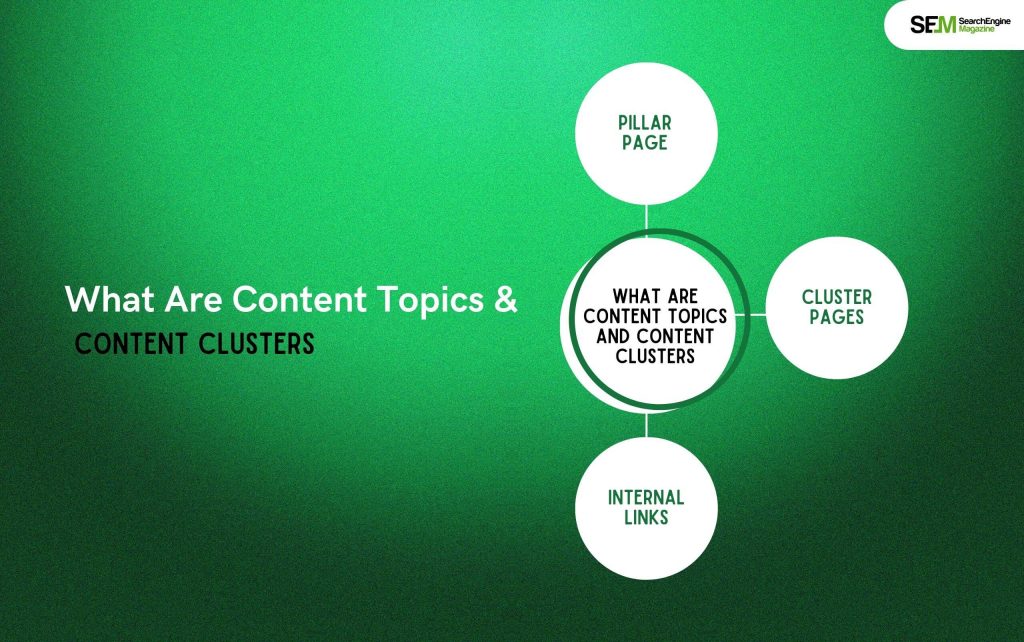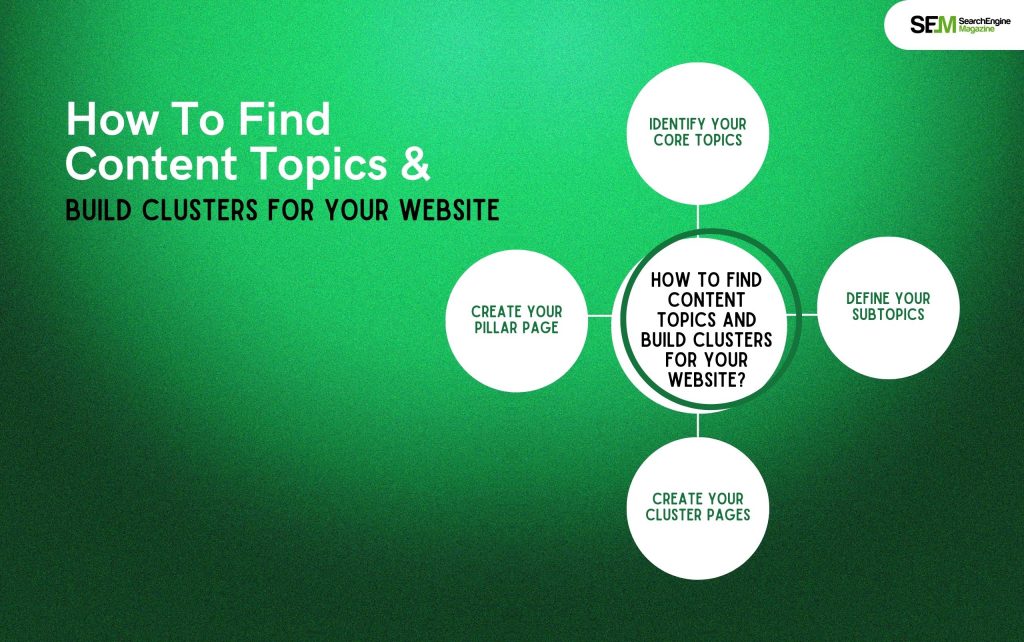White Label Link Building: How Does It Work For SEO Agencies?
Dec 19, 2025

Dec 19, 2025

Dec 18, 2025

Dec 17, 2025

Dec 15, 2025

Dec 15, 2025

Dec 15, 2025

Dec 13, 2025

Dec 12, 2025
Sorry, but nothing matched your search "". Please try again with some different keywords.


Do you wish to rank higher on Google and other search engines? To do so, you must work on content topics that are relevant, valuable, and authoritative for your target audience. However, simply creating content is not enough. You must organize and optimize your content in a way that helps users and search engines. This is where a topic cluster comes in.
In this article, you will learn about content topics, creating content clusters, its importance, and how to use it to improve your website SEO.

Content topics and clusters involve organizing and optimizing your content around a core topic and its subtopics. The core topic is a broad and general subject that your target audience is interested in, such as “digital marketing,” “fitness,” or “travel.” The subtopics are more specific and narrow aspects of the core topic, such as “digital marketing strategies,” “fitness tips,” or “travel destinations.”
A topic cluster consists of three main components:
This is a comprehensive and authoritative page that covers the core topic and its main subtopics. The pillar page provides an overview of the topic and links to the cluster pages for more details.
The pillar page acts as the main hub of content for the topic and aims to rank for the main keyword and its variations.
These are pages that cover the subtopics in more depth and detail. The cluster pages provide specific and valuable information on the subtopics and link back to the pillar page for more context.
They also act as the supporting content for the topic and aim to rank for related long-tail keywords and questions.
These are links that connect the pillar page and the cluster pages together, creating a logical structure for your website.
The internal links help users to navigate and explore your content and help search engines to understand and index your content.
Content topic clusters are important for your website’s SEO because it can help you:
By creating a pillar page and cluster pages that cover a topic and its subtopics thoroughly, you can demonstrate your expertise and credibility on the topic.
This increases your chances of ranking higher on Google and other search engines. Topic clusters can also help you prevent keyword cannibalization – when multiple pages on your website target the same keyword. This is bad since it dilutes your ranking chances.
By creating content that matches the search intent and expectations of your target audience, you can increase your relevance and engagement with your content and reduce your bounce rate and exit rate.
Topic clusters can also help you target long-tail keywords and questions that your audience is searching for. Doing so will help you capture more organic traffic and conversions.
By creating a clear and coherent website structure, you can improve your user experience and satisfaction with your content. This encourages visitors to stay longer and explore more on your website.
Topic clusters can also help you improve your site speed and performance by reducing the number of pages and links on your website and optimizing your content for mobile devices.

Finding relevant content topics and creating topic clusters for your website is not a one-time task but an ongoing process that requires research, planning, execution, and optimization.
Here are the main steps to create topic clusters for your website:
| How To Create Topic Clusters (At A Glance)? Identify core content topics. Do your keyword research. Identify pillar content pages and related subpages. Create original, high-quality content. Track your content cluster’s performance. |
The first step is to identify the core topics that you want to create topic clusters for. These are the broad and general subjects that your target audience is interested in and that are relevant to your niche and goals.
You can use tools like Semrush alternatives to conduct keyword research and find the main keywords and topics. Moreover, ensure that your audience is searching for them and that they have high search volume and low competition.
You can use tools like AnswerThePublic, BuzzSumo, or Quora to find the common questions and problems that your audience has. This helps you provide solutions for them.
Additionally, aim to have one core topic for each main category or service. This will help you represent your unique value proposition and competitive advantage.
The next step is to define the subtopics that you want to cover for each core topic. These are the more specTherefore, use the tools above to find the long-tail keywords and questions that are related to your core topic. In addition, they should have high search volume and low competition.
Additionally, use tools like Ahrefs, SEMrush, or Moz to analyze the top-ranking pages for your core topic.
Moreover, find subtopics that they cover and that you can improve on. Aim to have at least 5-10 subtopics for each core topic, covering the different angles and perspectives of the topic.
The third step is to create your pillar page for each core topic. This is the main page that covers the core topic and its main subtopics, which links to the cluster pages. Therefore, your pillar page should be
The fourth step is to create your cluster pages for each subtopic. These pages cover the subtopics in more detail and link back to the pillar page for more context.
Therefore, they should be specific and valuable and provide more information, tips, examples, and resources for your audience.
In addition, your cluster pages must be optimized for SEO and include various elements like:
As per Google’s current content guidelines, your SEO strategy is null and void without relevant content topics and clusters in 2025. You can no longer publish one-off content posts just for the sake of temporary ranking in search results. Not only you will fail to get organic traffic from such short-term strategies, but also end up harming your website in the process.
In 2025, it is imperative to find content topics relevant to your website niche and build clusters around the same.
Topic clusters can help you improve your SEO performance by boosting your topical authority, relevance, and user experience.
Therefore, we hope that this guide on topic clusters helped you boost your website’s SEO and page rankings. If you have any questions, comment below!
Also read
Barsha is a seasoned digital marketing writer with a focus on SEO, content marketing, and conversion-driven copy. With 7 years of experience in crafting high-performing content for startups, agencies, and established brands, Barsha brings strategic insight and storytelling together to drive online growth. When not writing, Barsha spends time obsessing over conspiracy theories, the latest Google algorithm changes, and content trends.
View all Posts
White Label Link Building: How Does It Work ...
Dec 19, 2025
Marketing Fundamentals: How To Build Your Fir...
Dec 18, 2025
AI SEO: Why It Matters & How To Rank O...
Dec 17, 2025
Best QA Testing Tools For Agile Development T...
Dec 15, 2025
NewzNav.com 2014623980: Is This News Site Wor...
Dec 15, 2025

